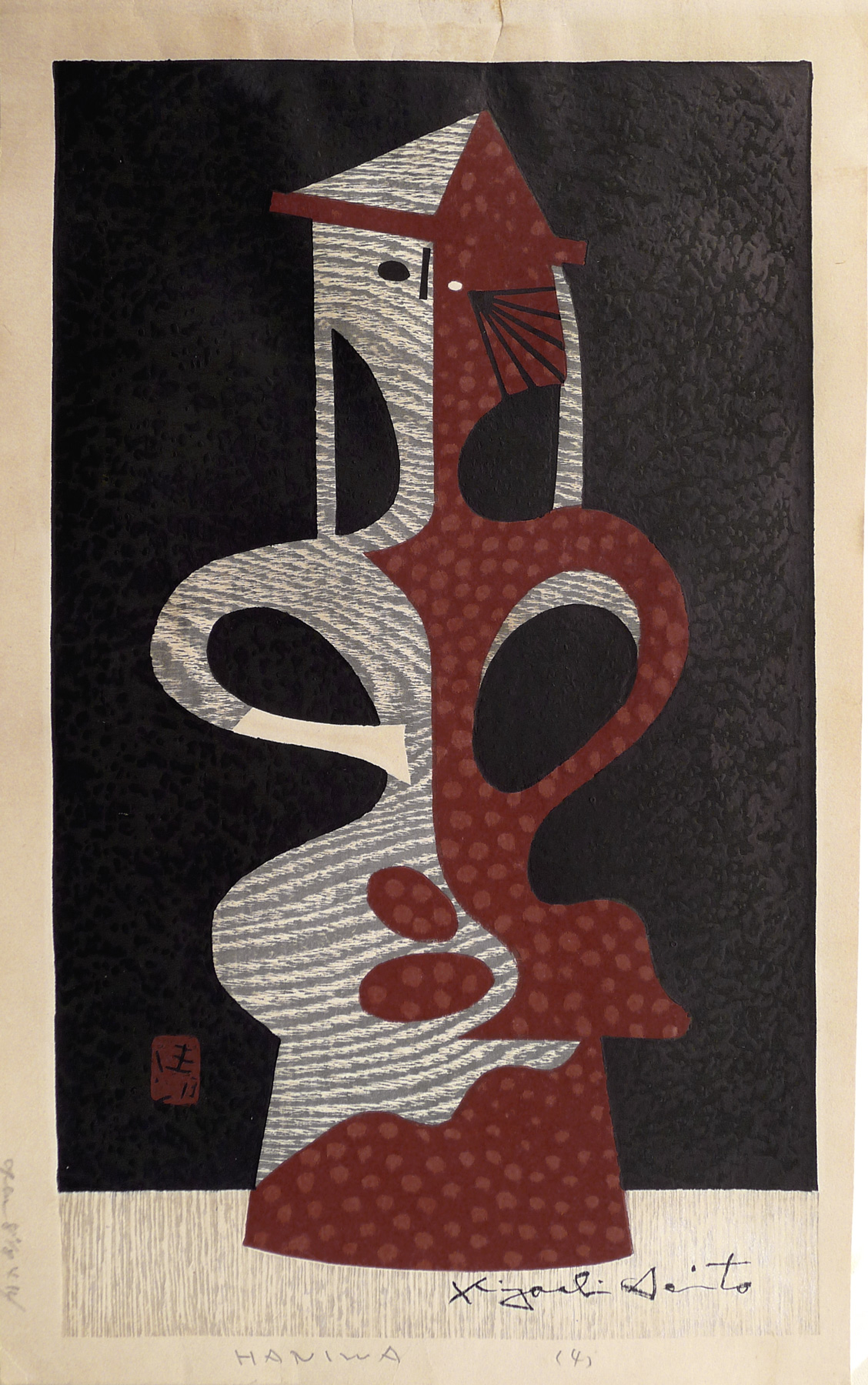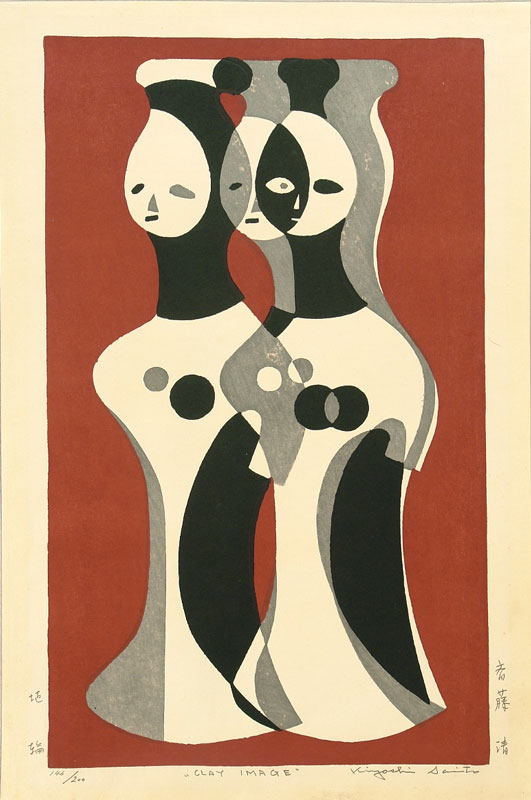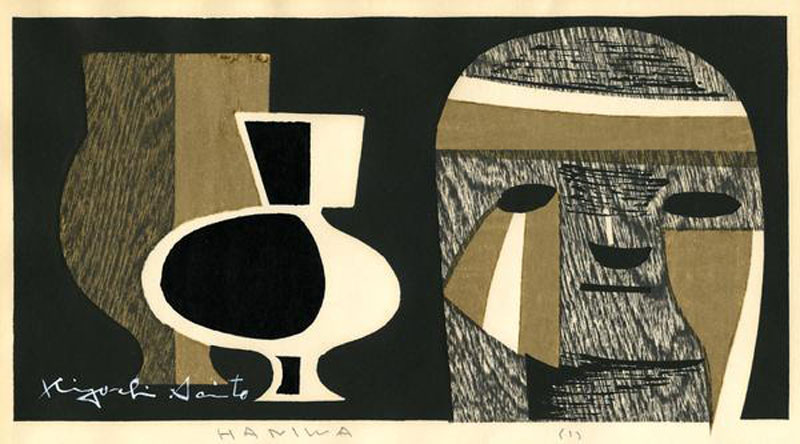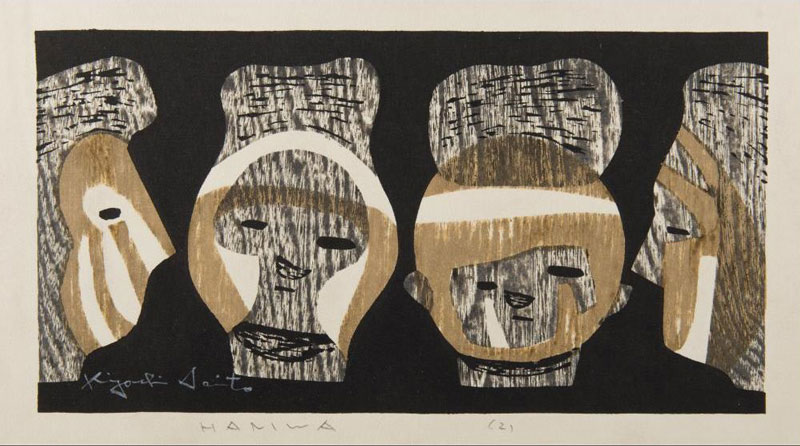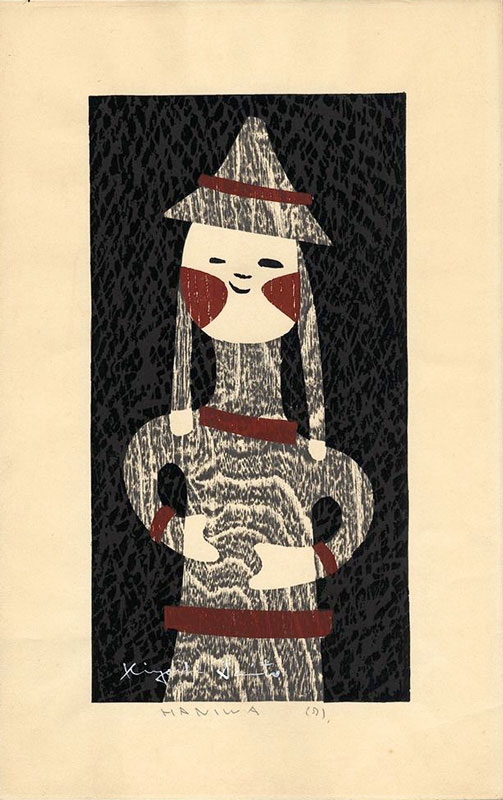About This Print
One of at least fifteen prints by Saitō (see examples below) picturing one or more haniwa, ancient clay funeral sculptures from the Kofun era (approximately 200-552CE)1. Saitō's rendering of a haniwa warrior in this collection's print makes the figure look monumental, but comical with its lopsided face.
Writing in 1957, Oliver Statler called the artist's haniwa prints "adventures with straight lines and curves, stimulated by his study of the nude" and "an exercise in deformation."2
1 Sources give varying dates for this era. 200-552CE, seems to be the most commonly used.
2 Saitō Kiyoshi hangashū, Oliver Statler and Chisaburō Yamada, Kodansha International, 1957
Haniwa Warrior Figure
Source: website of Asian Art Museum Chong-Moon Lee Center for Asian Art and Culture http://education.asianart.org/explore-resources/artwork/haniwa-form-warrior and http://searchcollection.asianart.org/view/objects/asitem/id/18187
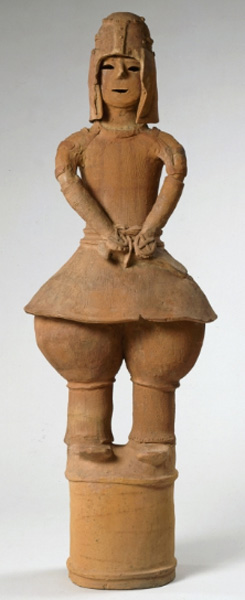 | Haniwa in the form of a warrior 武人埴輪 古墳時代 Date: approx. 500-552 Historical Period: Kofun period (250-552) Materials: Earthenware Dimensions: H. 47 1/2 in x W. 16 1/2 in, H. 120.7 cm x W. 41.9 cm Object Number: B60S204 This elaborate example represents a male warrior, about four feet tall, elevated on a high, cylindrical base. Like other haniwa, it was constructed of clay, using the coil method. The small, tubular arms were made separately and attached at the shoulder. Warrior figures like this one provide evidence of a military class active well before the rise of the Taira and Minamoto clans in the twelfth century. The pose of this haniwa—frontal and erect, with one hand grasping the sword in readiness—suggests its role as a protector of the tomb, its inhabitant, and his successor. Enormous burial mounds called kofun (literally "old tombs"), often keyhole-shaped, were constructed during the Kofun period. Powerful clan chiefs were entombed in these mounds, and a variety of funerary objects were placed both in and around the mounds. Many clay cylinders, known as haniwa, were erected around the mounds, either to define a sacred area or to prevent soil erosion at the edge of the mounds. Originally plain, these clay cylinders soon came to be adorned with figures: houses, boats, animals such as horses, and humans. This haniwa warrior stands erect in complete warrior's gear: riveted helmet, shoulder plates, armlets, and sword. His belted armor flares over billowing trousers tied below the knee. |
Four Other Saito Prints Depicting Haniwa
Print Details
| IHL Catalog | #1922 |
| Title | Haniwa (4) 埴輪 (4) |
| Series | Haniwa and Clay Figures |
| Artist | Saitō Kiyoshi (1907-1997) |
| Signature |  |
| Seal |  |
| Publication Date | not dated (c. mid-late 1950s) |
| Edition | unknown |
| Publisher | self-published |
| Carver | self-carved |
| Printer | unknown |
| Impression | excellent |
| Colors | excellent |
| Condition | good - margins slightly trimmed; right margin trimmed at angle; tape remnants along top margin verso |
| Genre | sosaku hanga (creative print) |
| Miscellaneous | |
| Format | oban |
| H x W Paper | 17 x 11 1/4 in. (43.2 x 28.6 cm) |
| H x W Image | 14 3/16 x 8 1/4 in. (39.4 x 25.7 cm) |
| Collections This Print | Henry Art Gallery and the University of Washington FA 64,21,1; Five Colleges and Historic Deerfield Museum Consortium AC 1996 246; Arizona State University Museum ASUM 1994.189.000 |
| Reference Literature | Symposium on the Exhibition Japan, Yugoslavia and the Biennial of Graphic Arts: Documents of Collaboration, Proceedings, Marjeta Ciglenecki, et. al., International Center for Graphic Arts, 2019, p. 56. [This collection's print is shown with credit to The Lavenberg Collection of Japanese Prints.] |
4/28/2021


